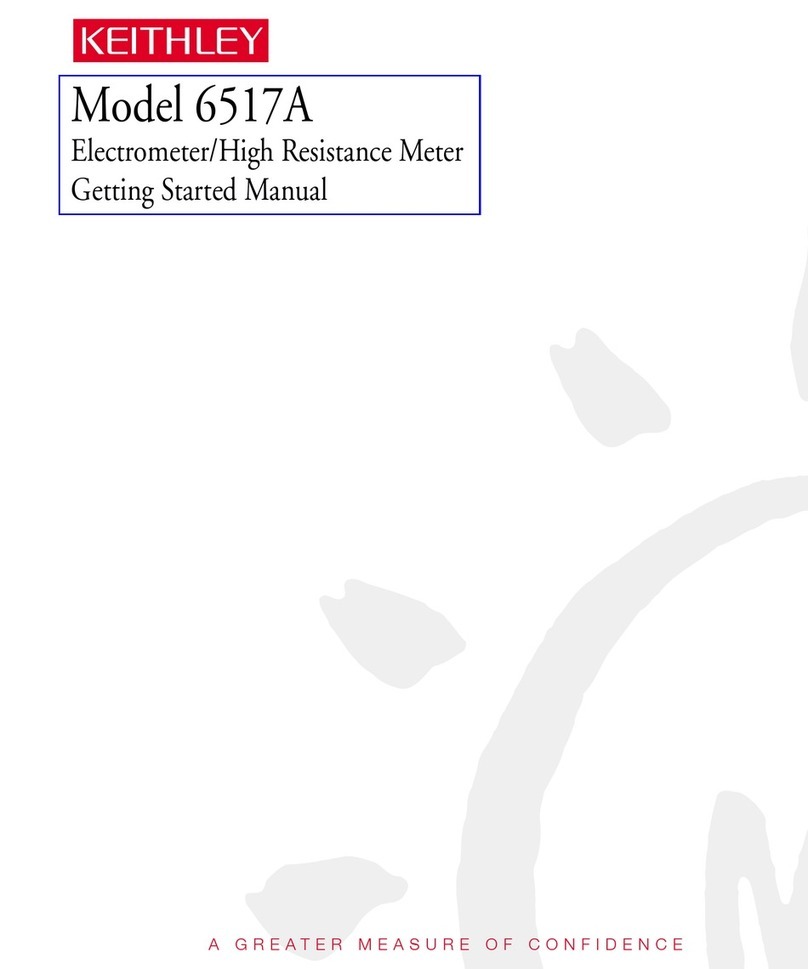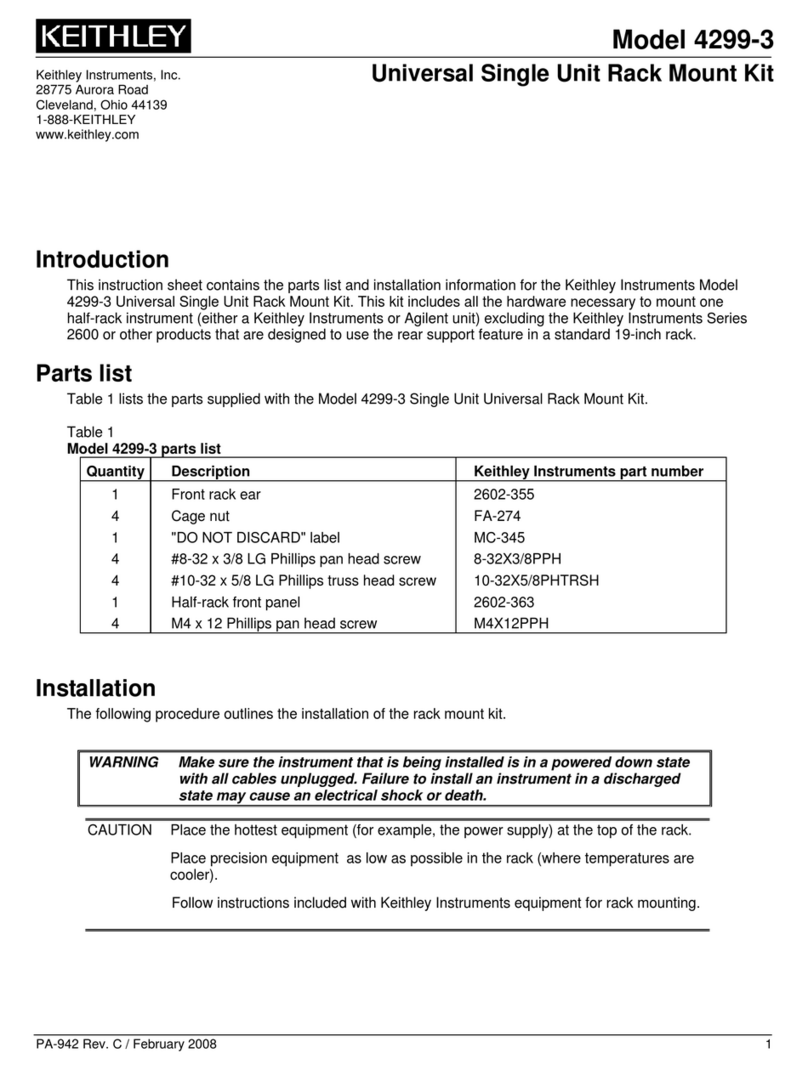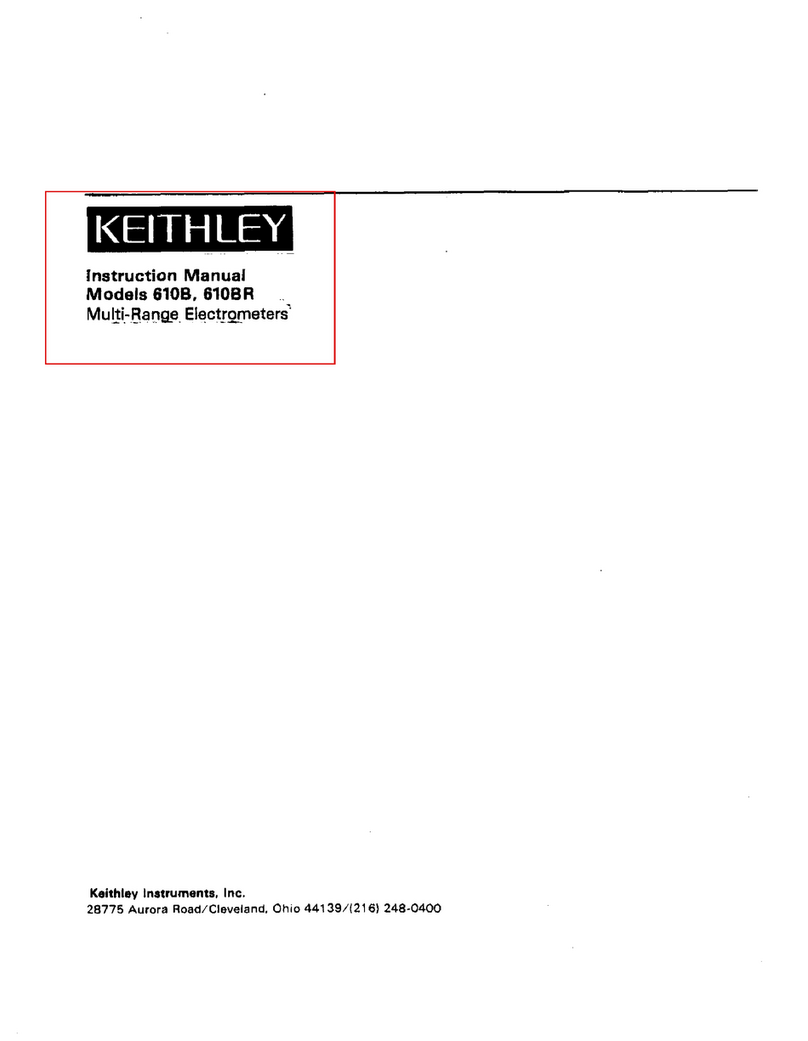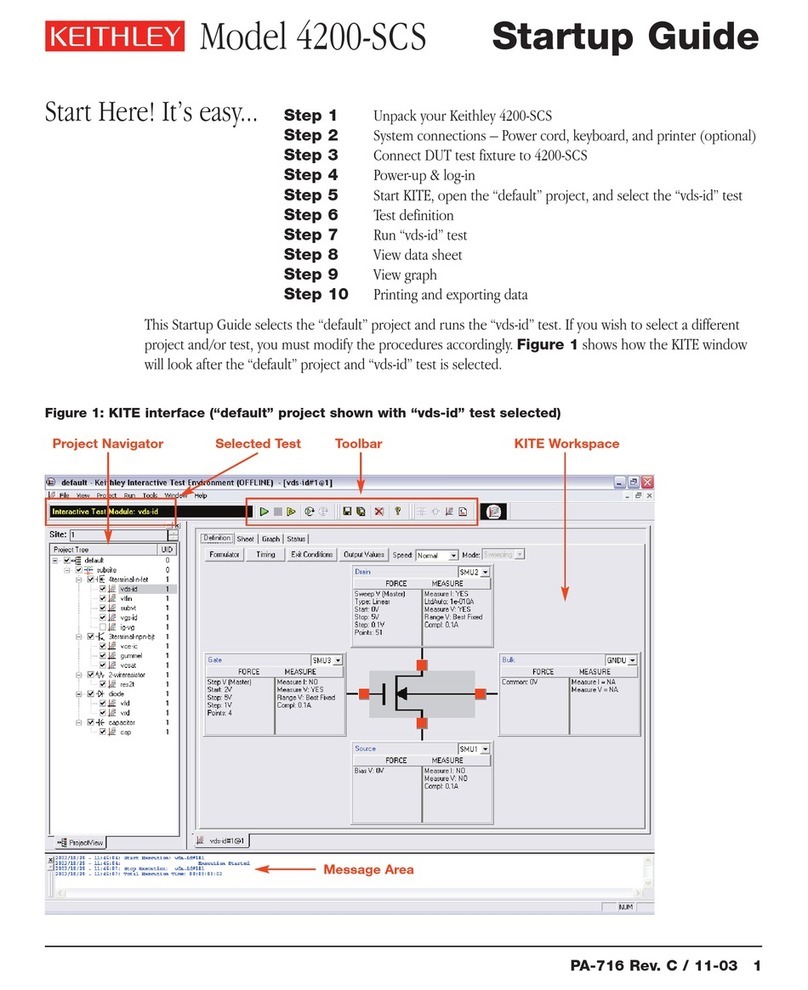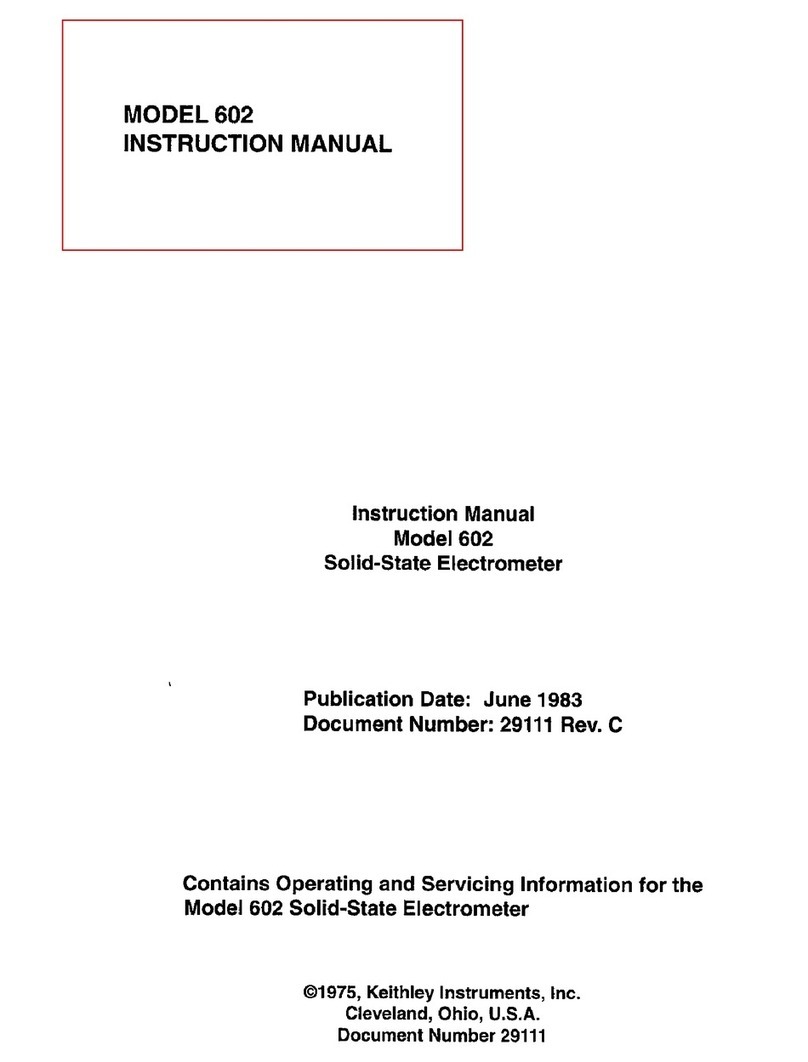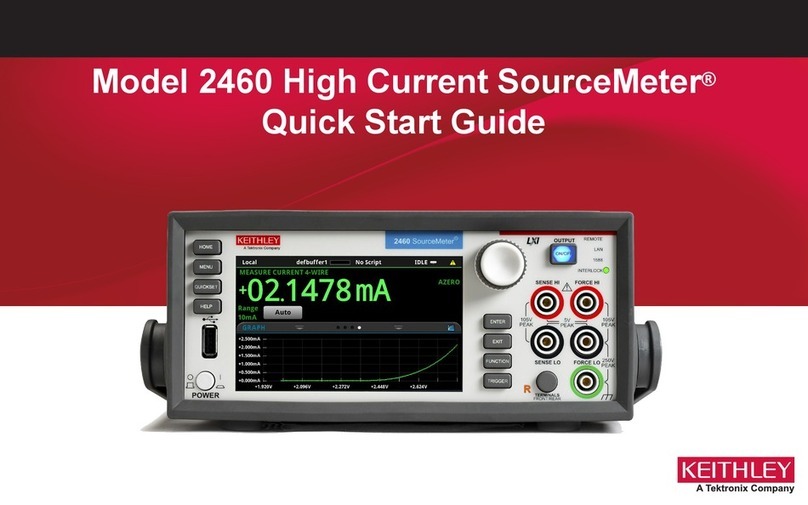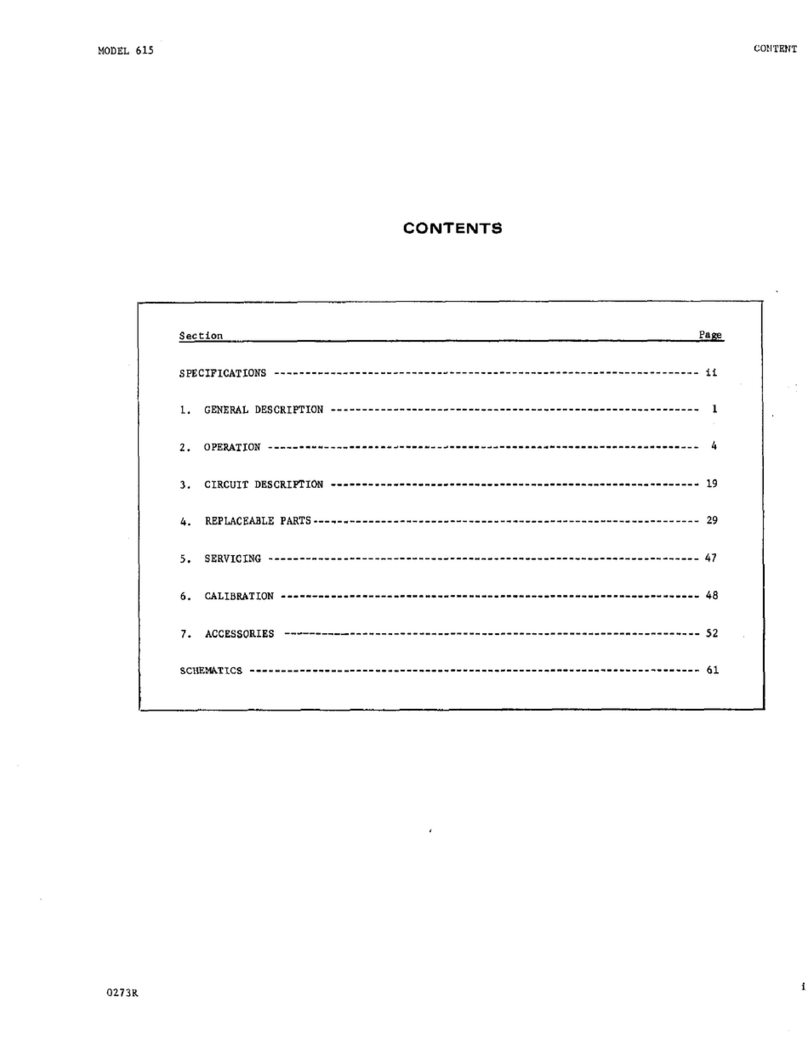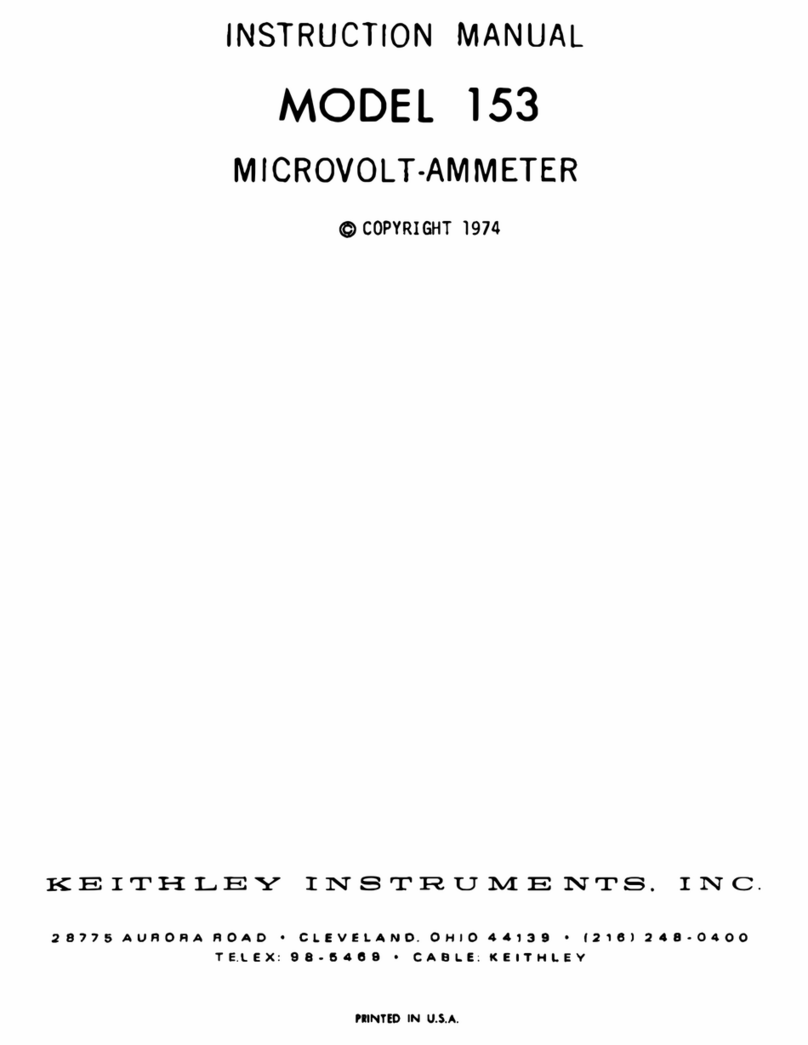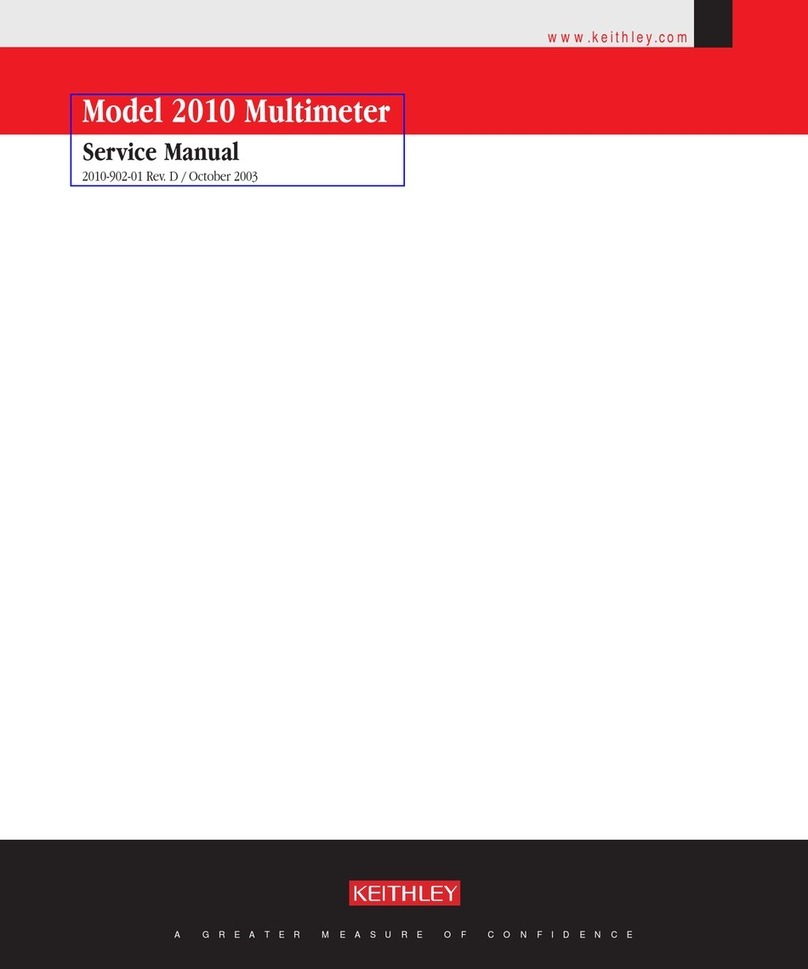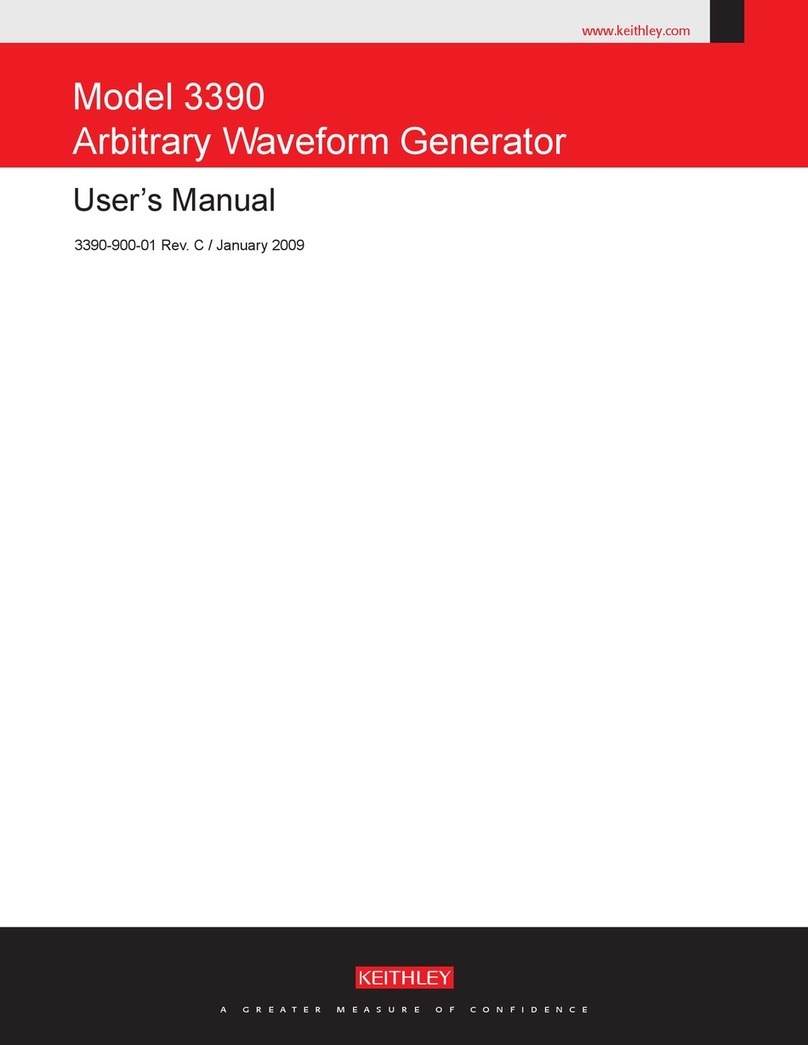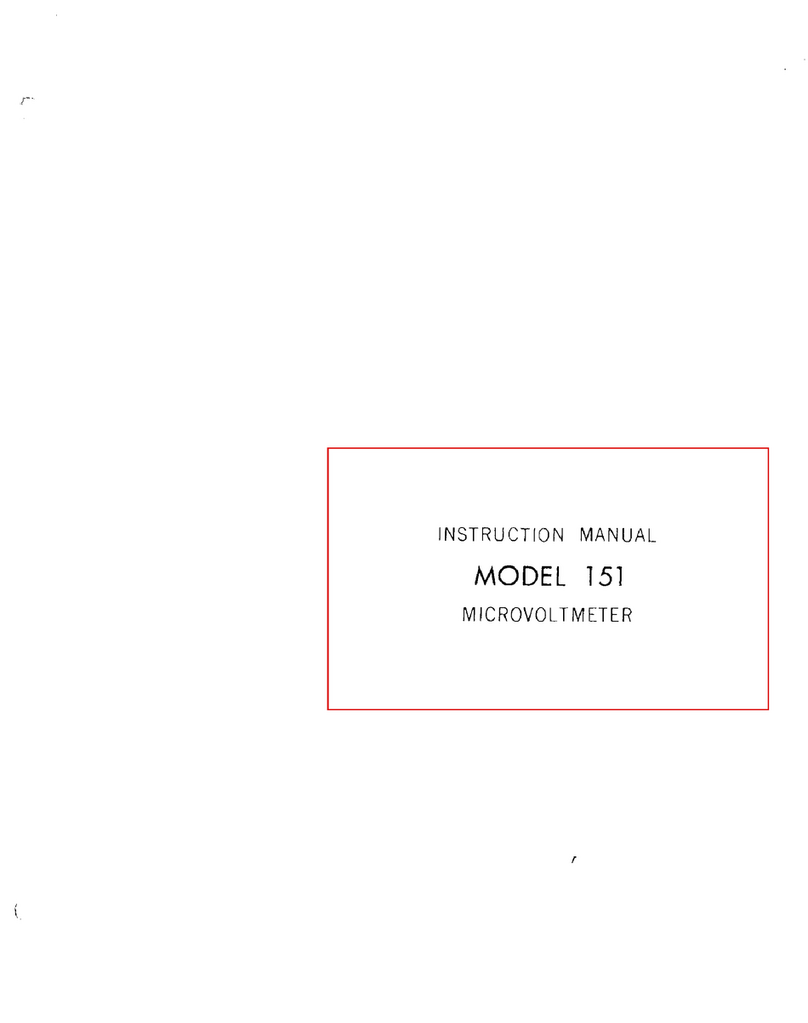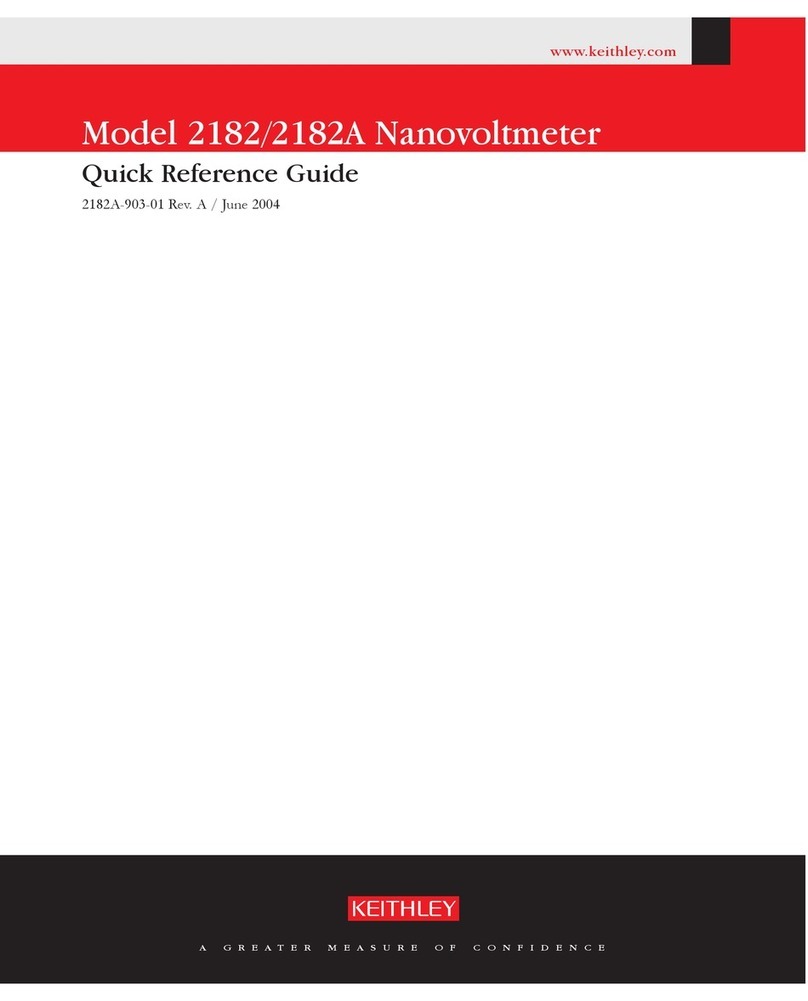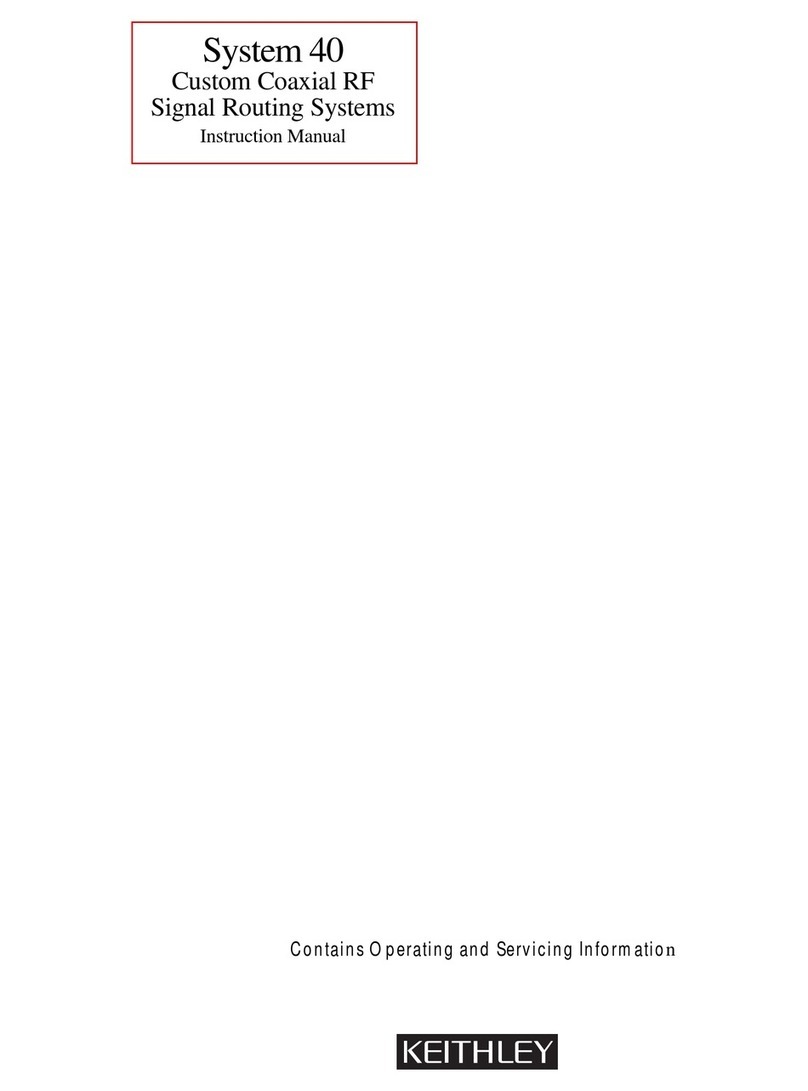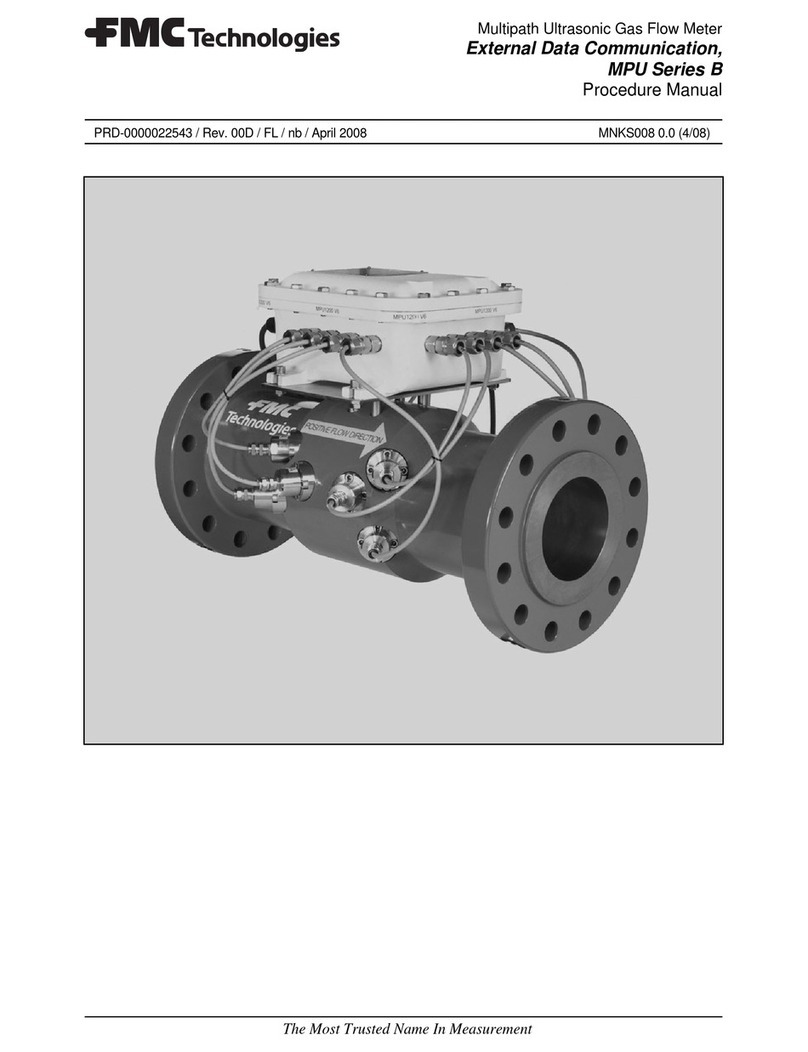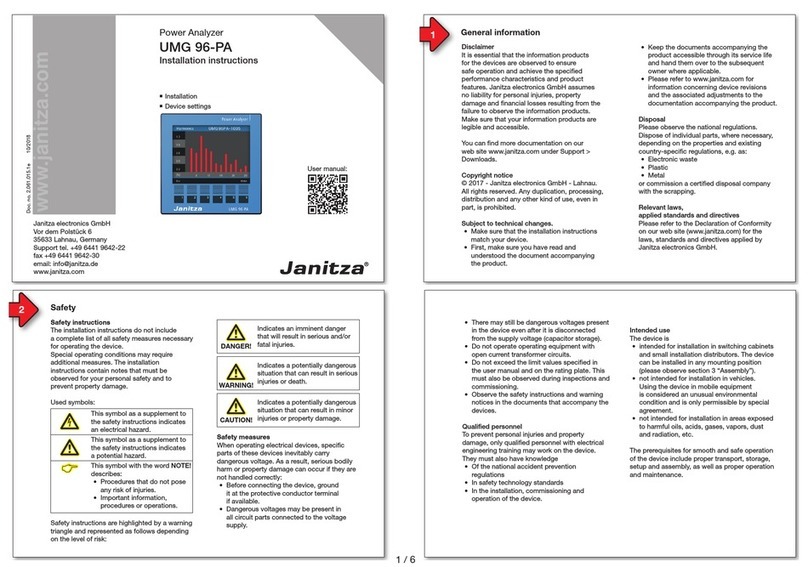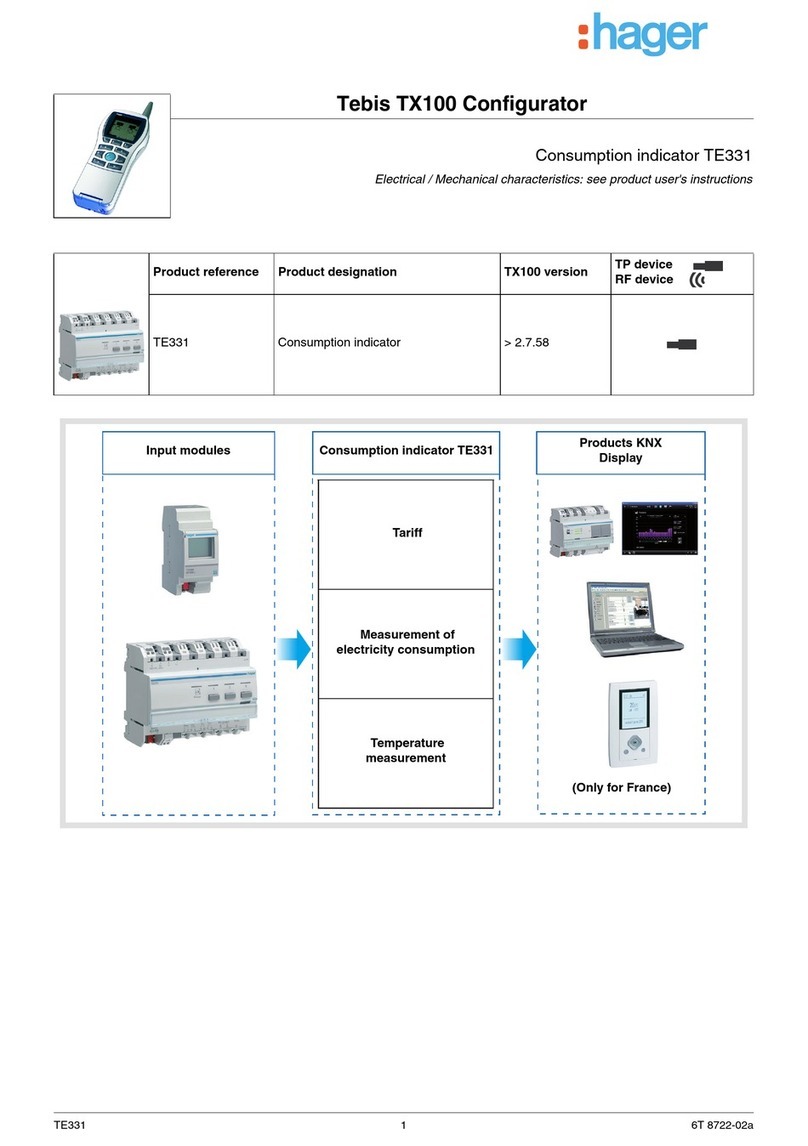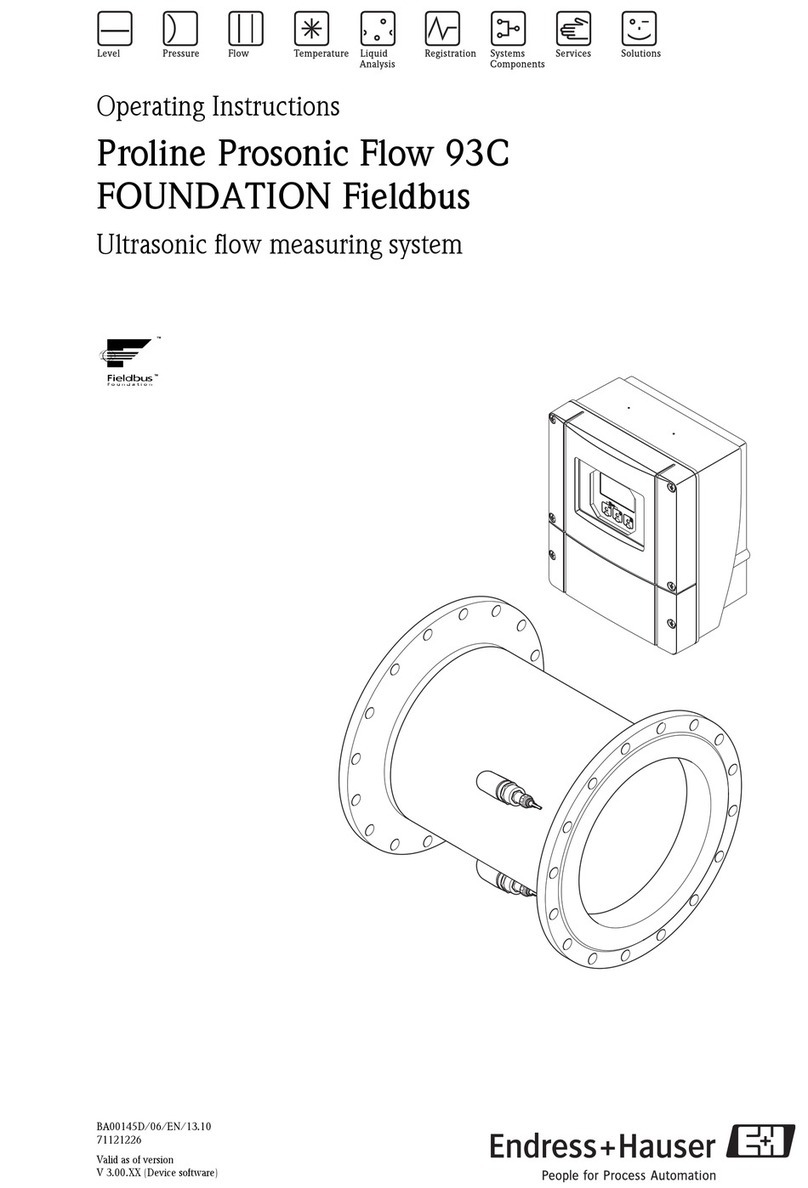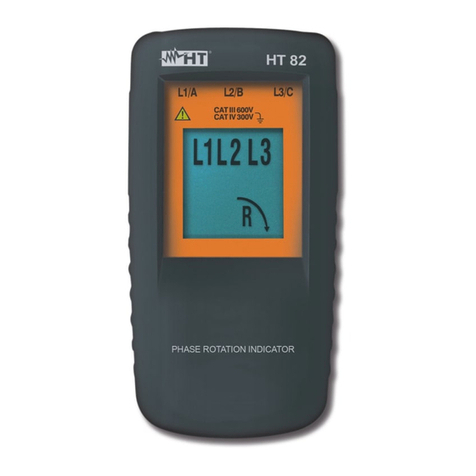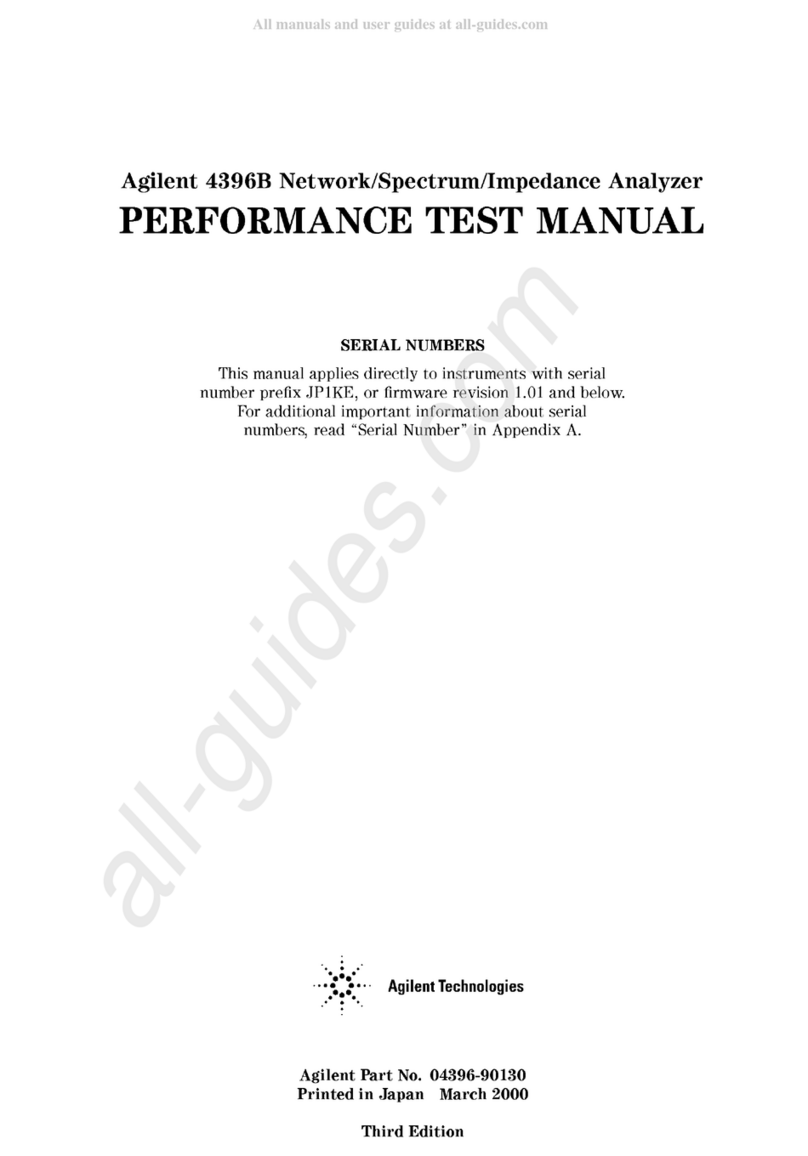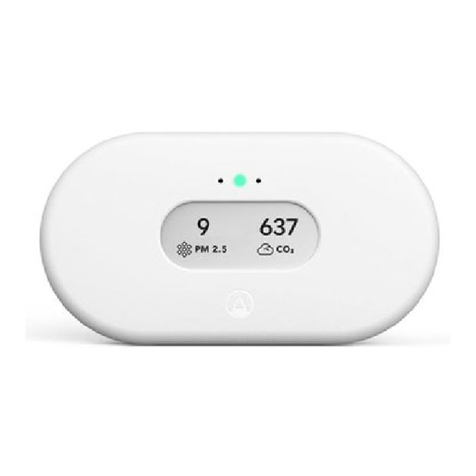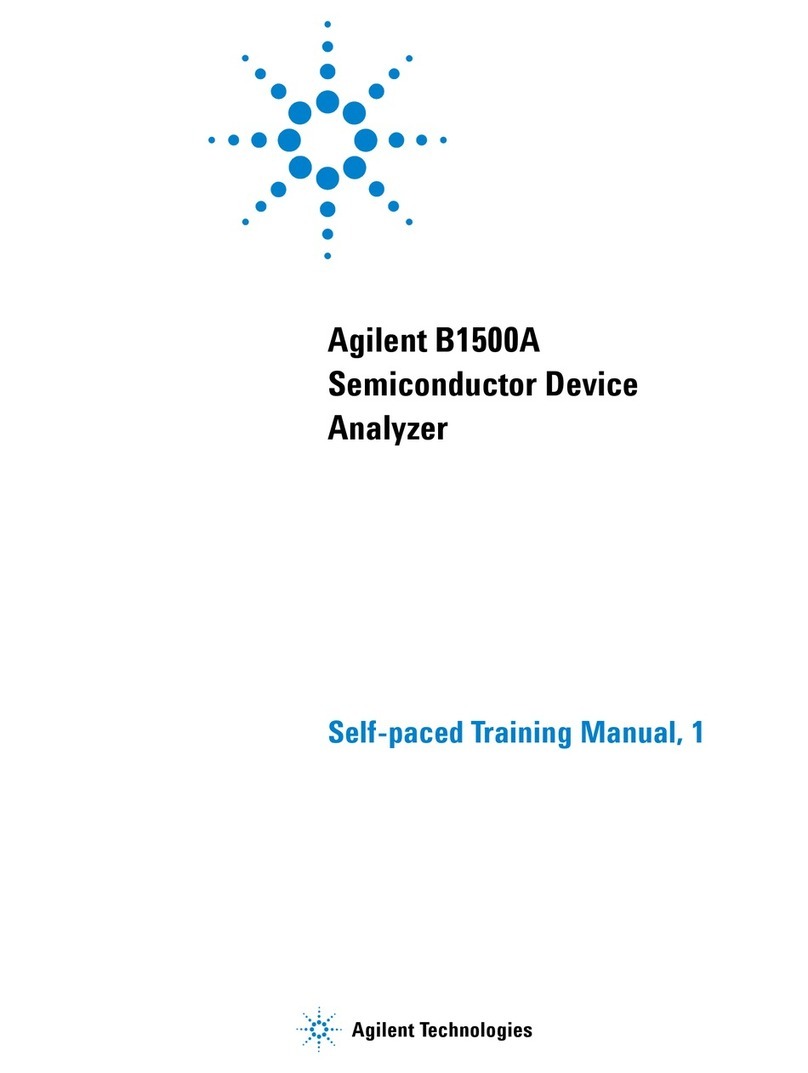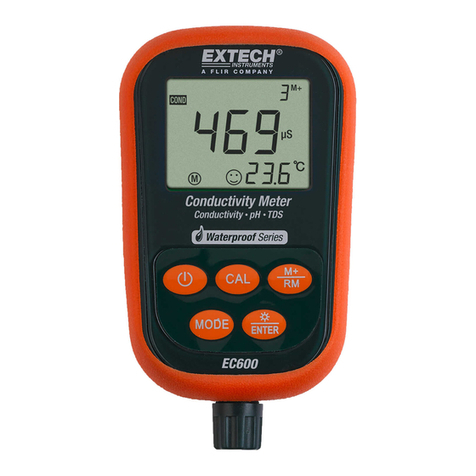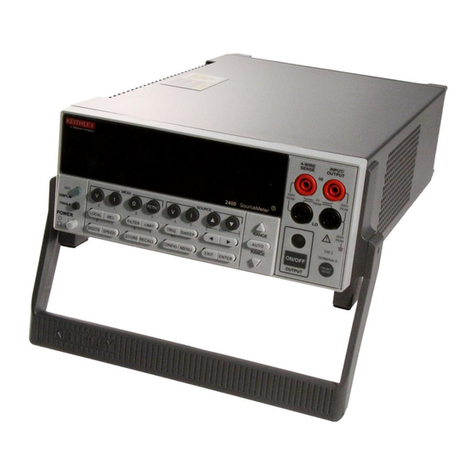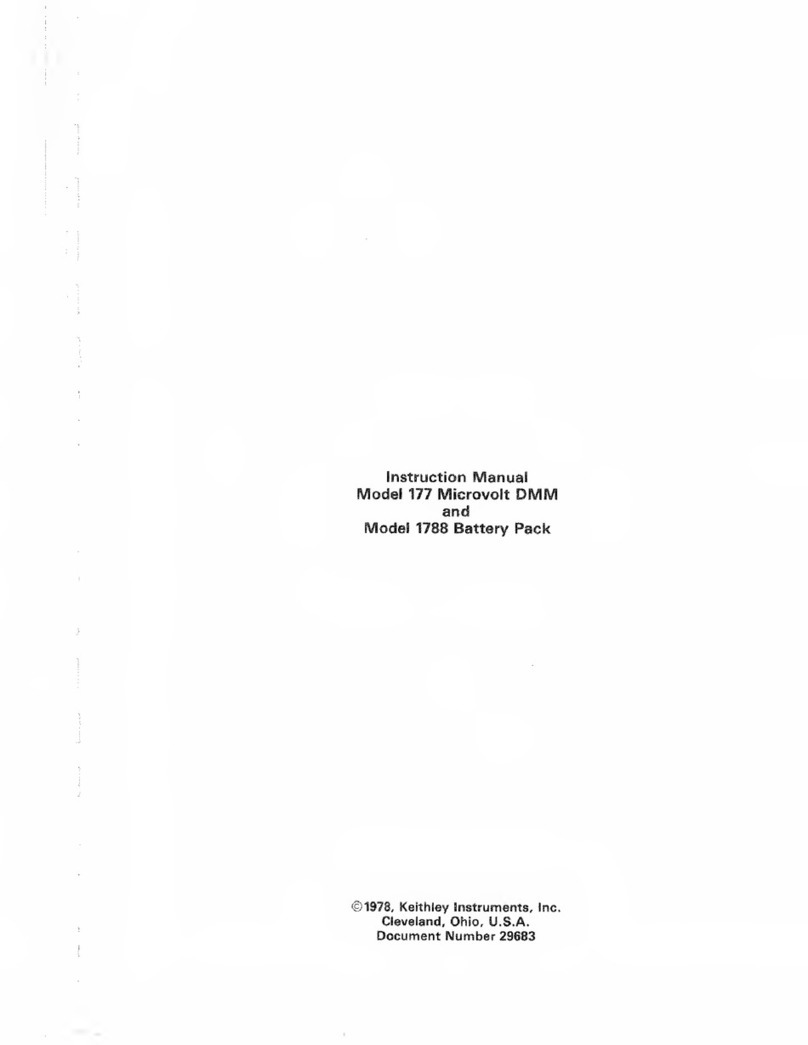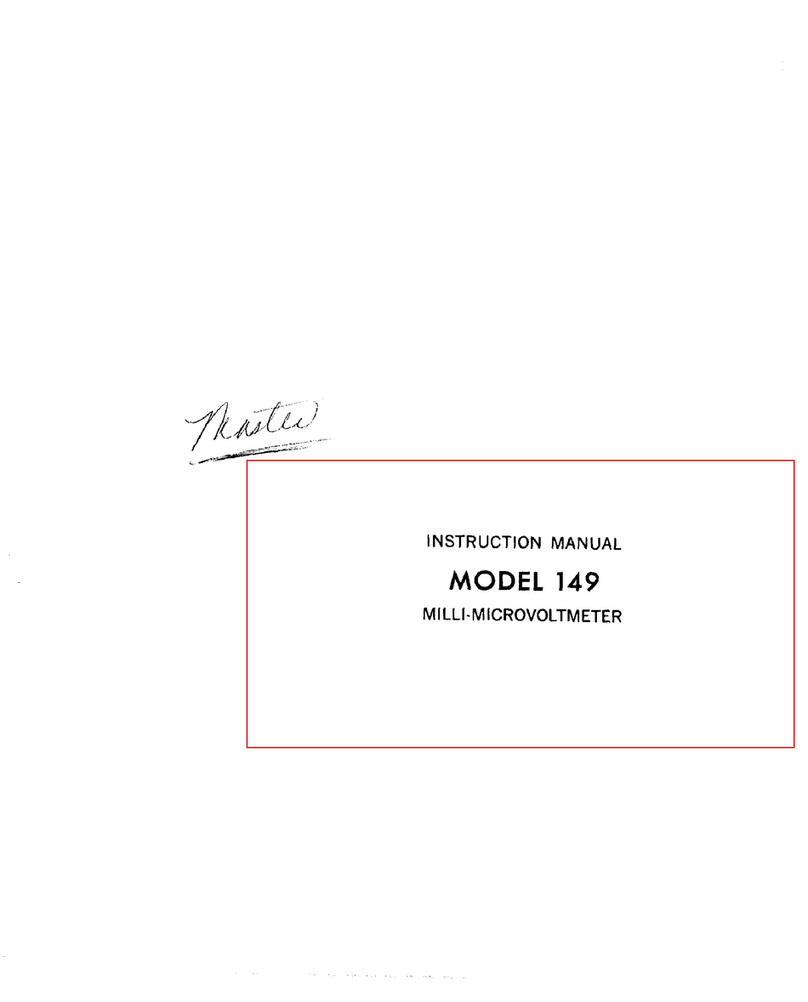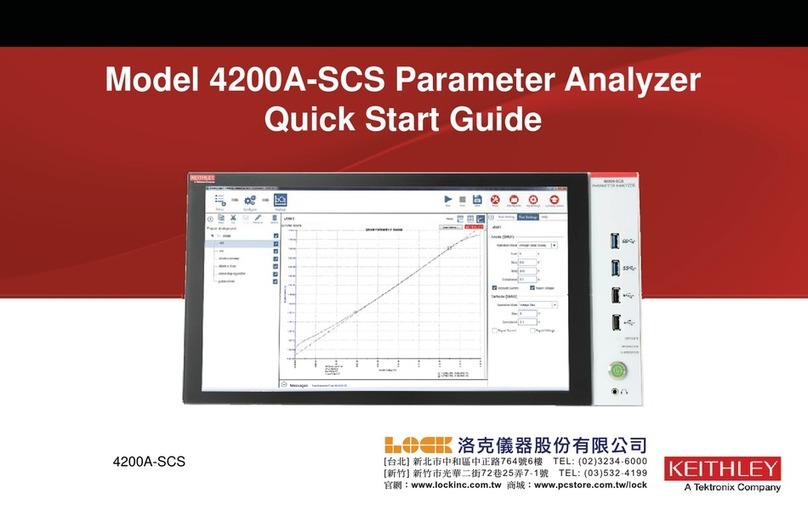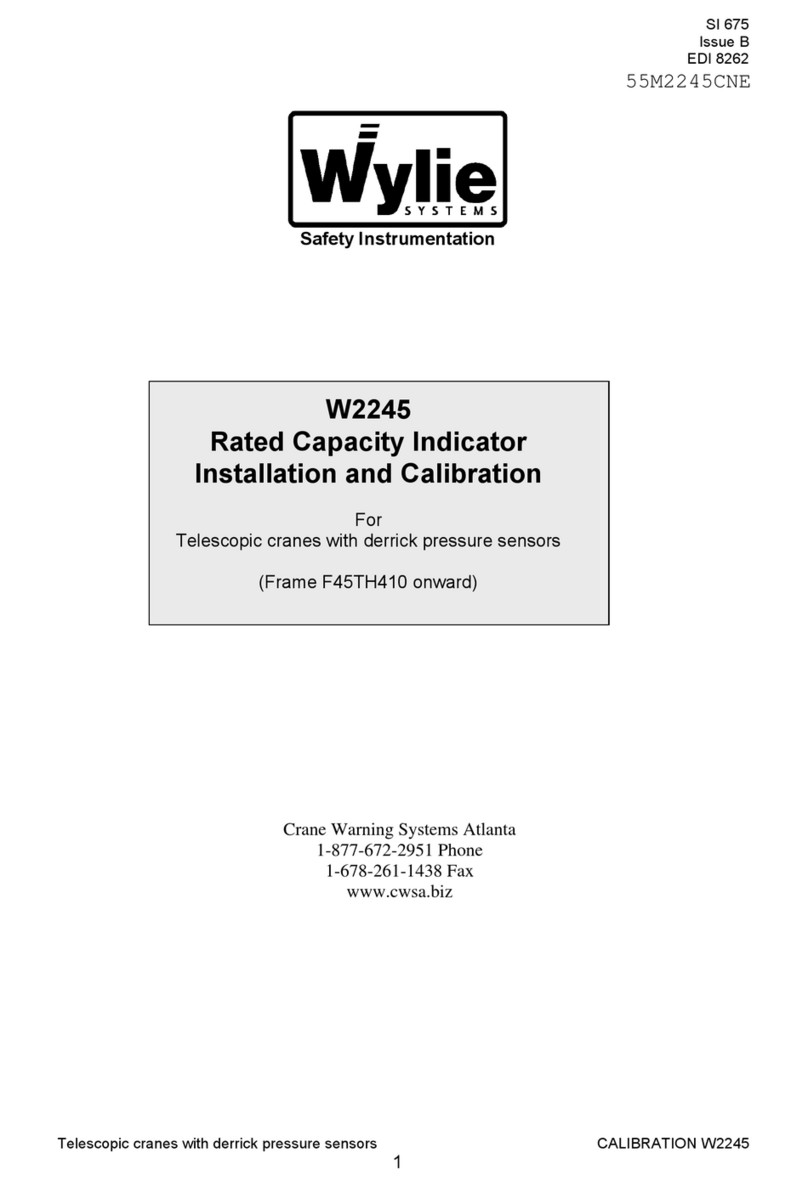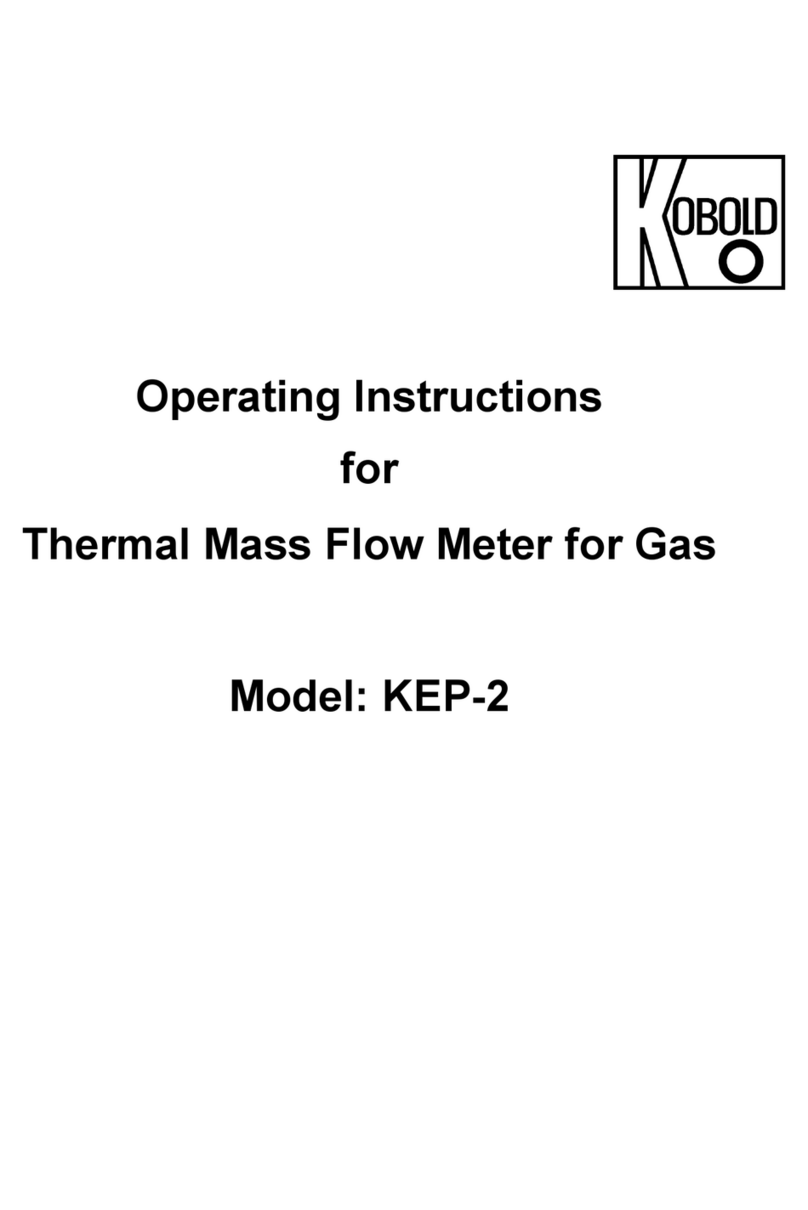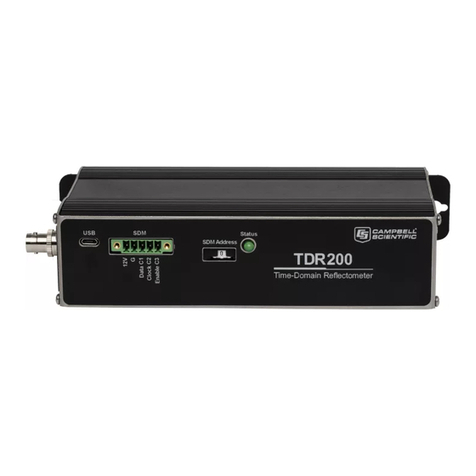
CIRCUIT DESCRIPTION
MODEL 640 ELECTROMETER
d. Sensitivity Switching. SANGE Switch 5403 has
13 positions which connect resistors R457 through
R469. The range resistors determine the voltmeter
gain or sensitivity from 30 microvolts to 30 volts
full scale.
a.
Power Supply, (As shown on Schematic 213823).
The power for the Model 640 is provided by either a
rechargeable 6-volt battery pack or a recitifier cir-
cuit
operated by 50-60 Hz line power. Power Switch
S301 selects four positions: “AC” (line power),
“OFF”,
“BATT” (battery power) and “SATT TEST” (battery volt-
age check). The power supply utilizes a -6 volt un-
regulated voltage from the battery pack or a rectifier
circuit composed of transformer T303 secondary (yellow
end green taps) and diodes X317-D318.
A
5-volt regu-
later is composed ofcapacitor C321, transistors Q317-
Q319 (Darlington series regulator), and reference
diode D319. Transistors 9321 and Q322 compoee an out-
put sensing amplifier to regulate the series transistor
stage. Potentiometer R338 is a.” internal adjustment
of the regulated output (approximately -5 volts). The
regulated voltage is applied to an Inverter circuit
consisting of transistors Q301-Q302 end saturable core
transformer T301.
1. + 4OV Supply. Power is tapped from B second-
ary winding on Craneformer T302 (brown/yellow,
brown/white, brown). Diodes D301-0304 and capact-
tars C302-C303 provide + 40 volts for the dc ampli-
fier output stage.
2. - 2ov supply. This voltage is not used in
the Model 640.
3. + 12” supply. Power is tapped from B eecand-
ary winding
on
transformer T302 (red/yellow, yellow/
white, yellow). Diodes 0307-0310, resistor R304,
and capacitor C307 form a rectifier circuit. A
voltage doubling circuit cdnsisting of capacitors
C305-C306, and diodes D30S-D309 forms a bootstrap
voltage). Transistors Q303-Q304 form a Darlington
series regulator circuit. Feedback is obtained by
sampling the + and - 12 volt outputs at the junction
of resistors R316 and R317. Transistors Q30S and
Q309 form a differential amplifier which senses a
change in either the + or - outputs. Another dif-
ferential pair (transistors Q306-Q307) drives the
base of transistor 9304 to complete the feedback
100p. Transistor Q305 provides overload-current
protection by sensing the current through resistor
R305.
4. -12v Supply. Power is tapped from a aecond-
ary winding on transformer T302 (red, blue/ white,
blue). Diodes D311-0312, resistor R318, and cap-
acitor form a rectifier circuit. Transistors Q310-
Q311 form e Darlington series regulator circuit.
Feedback is obtained by sampling the -12 volt out-
put et the wiper erm of potentiometer R327. This
potentiometer adjusts the output voltage. Transis-
tors Q114-Q115 form a differential amplifier with
the base of Q314 referenced to diode D314. Trans-
istor 9313 drives the base of Q310 to series regu-
late the output. Transistor Q312 provides overload
current protection by sensing the current through
resistar R345.
5.
Line Power to Battery Switching. The Model
640 can be modified so that a failure of line power
(with POWERSwitch set to
“AC”)
will ca”se an auto-
matic switching to battery operation to occur. A
diode
(0.75A. 5OV,
Keithley Part No. RF-17) can be
connected at the POWERSwitch 88 shown in Figure
When line power is present the diode is turned off
and the battery is not used.
f. Battery Charuinp. Circuit. The charging circuit
functions whenever the POWERswitch is eet to “AC”
or “OFF”. Charging c”rrent is provided
by a
rectif-
ier circuit conslating of diodes 0315-0316 and re-
si*tor 107.9. Fuse F302 is rated for 314 ampere and
used to protect the battery end circuitry during
charging or discharging.
FROM BATTERY
I
FIGURE 17. Line to Battery Switching.
3-5.
VOLTAGE FUNCTION. With the FUNCTION Switch
set to “VOLTAGE”, the Model 640 operates as a sensi-
tive voltmeter with input “OPEN” or shunted by any
one of four resistors,RlOl through R104.
3-6.
CURRENTFAST FUNCTION. With the FUNCTION Switch
eet to “CDRRENT FAST”, the Model 640 operates as e
feedback ammeter with a Shunt Resistor connected
acrose the amplifier (from High to Feedback). An
external resistance can be connected ,in place of the
four Shunt Resistors “he,, switch 5102 ie *et to “OPEN”.
This
method minimizes the slowing effect of capacit-
ance across the input.
3-7. CURRENT INTEGRATE
FUNCTION.
With the FUNCTION
Switch set to “CURRENT INTF.GRATE”,the Model 640
operates ee a feedbaok anmeter or coulomb-meter.
With (1 Shunt Resistor connected,(RlOl through R104)
a 20 pF capacitor (ClO5) shunte the amplifier to
therefore slow the response and filteenoisy signals.
With switch S102 set to “OPEN”,capacitor Cl05 acts
as an integrating capacitor for charge or current
integration measurements. A simplified diagrams of
the current integration amplifier is shown in Figure
11 . When the
FUNCTION Switch is set to “CURRENT
INTFJXATE”, switch S4O2 connects -5 volts to
solenoid
K102 which in turn closes e contact.
The contact
connecte the Damping Control (RlOS) such that Capac-
itor Cl05 is connected in the feedback loop. The
Damping Control adjusts the effective capacitance
connected in the feedback loop and thus controls the
amount of damping. When the Damping Control is ad-
justed fully clockwise the maximum damping (20 pF
+ .25%)
is provided.
16
1170




















